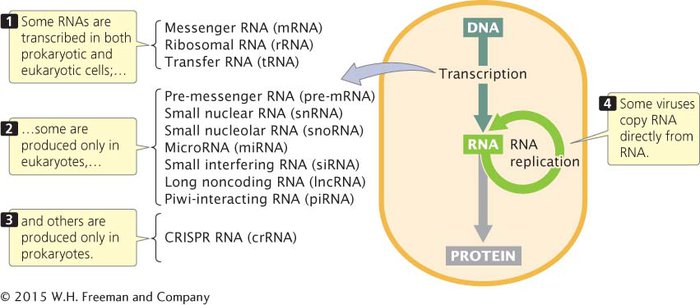10.2 Transcription Is the Synthesis of an RNA Molecule from a DNA Template
All cellular RNAs are synthesized from DNA templates through the process of transcription (Figure 10.2). Transcription is in many ways similar to the process of replication, but a fundamental difference relates to the length of the template used. In replication, all the nucleotides in the DNA template are copied, but in transcription, only parts of the DNA molecule are transcribed into RNA. Because not all gene products are needed at the same time or in the same cell, the constant transcription of all of a cell’s genes would be highly inefficient. Furthermore, much of the DNA does not encode a functional product, and transcription of such sequences would be pointless. Transcription is, in fact, a highly selective process: individual genes are transcribed only as their products are needed. However, this selectivity imposes a fundamental problem on the cell: how to recognize individual genes and transcribe them at the proper time and place.

Like replication, transcription requires three major components:
A DNA template
The raw materials (ribonucleotide triphosphates) needed to build a new RNA molecule
The transcription apparatus, consisting of the proteins necessary for catalyzing the synthesis of RNA